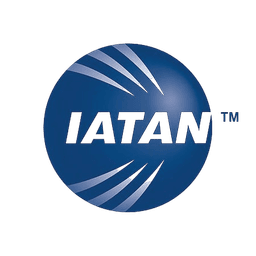


A bona fide archaeologist with a special interest in Inca roads who also just happens to be a drone pilot, rock climber and videographer...Kevin was made for our Qhapaq Ñan expedition.
Section Type: imageOnLeftParagraphToRight
Born and raised in the wine country of Northern California, Kevin has always been pathologically curious about the world and its people. He majored in anthropology and archaeology at UCLA, but it was a chance encounter at the university rock climbing wall that nudged him in the direction of the Incas. There he met a professor who was in urgent need of an experienced climber for a project in the Peruvian highlands. The rest, as they say, is history...

Inca road
Kevin has spent every summer since then hiking and working in the Andes. As one of his first archaeological projects, Kevin, in collaboration with the Smithsonian Institute, used GPS data, drone, aerial and satellite imagery, and the extensive knowledge of local collaborators to survey all of the Inca road remnants within a 75 mile circumference of Cusco. Using this data he was able to compile the most accurate extant map of the Inca road system surrounding the former capital of the Inca empire....See the fruits of his labors below.
Section Type: standardWidthImageS

Kevin left the fully academic track a few years ago, when he started leading study-abroad programs for college students. This new life gave him the chance to explore more creative avenues and he soon realised he had a talent for photography and videography. In an effort to meld his passion for archaeology with his growing love for videography Kevin has worked on a couple of films, and he will definitely be bringing his camera(s) along on our expedition. Watch this space!
Another chance encounter
After delivering a talk at the Institute for Andean Studies at Berkeley, Kevin got to chatting with a garrulous, bearded member of the audience who wanted to know more about Inca roads. That bearded individual was none other than SA Expeditions’ Founder and Explorer-in-Chief Nick Stanziano, and he was in luck.
Section Type: standardWidthImageS
Marcahuamachuco trail

The road to Marcahuamachuco
The more Kevin and Nick talked, the more they realised they needed one another. Kevin will be joining the SA Expeditions team for some or all of the section of the road that leads from Huamachuco to Jauja. It’ll be Kevin’s first visit to this section of the Qhapaq Ñan and he is “super-stoked be part of a project that will be taking a llama train on the road network the same way it was done five centuries ago.”
Kevin is really interested in marrying consumer tourism with legitimate archaeological research and he is convinced that the interests of SA Expeditions and the local communities can and will coincide with the interests of the scientific community.
Doing our bit for science
In addition to filming drone and video footage of our escapades, Kevin also has a cunning plan to make scientists out of all us! We at SA Expeditions are committed to ensuring that everything we do is scientifically relevant, and Kevin is currently designing a study that we can implement while we walk. Using aerial photography, satellite imagery, and GPS and ethnohistoric data Kevin will make sure that we do everything possible to cover the original route of the road. This will also give us the opportunity to scout out sections that may not yet have been documented. Kevin is confident that, while the odds of finding entirely new sections of the main North-South artery are fairly low, the expedition will be able to document points where there appear to be offshoots or other unexpected remains. Compiling this data and making it available to other researchers would be of great value to the scientific community.
Section Type: standardWidthImageS
Looking down on Cusco (Photo: McKay Savage)

“It’s quite unusual for archaeologists to do long directional studies of a road. John Hyslop did a huge study of the Qhapaq Ñan as a whole in the 1980s, but this will be a very different project,” says Kevin. “Unlike Hyslop we’ll be doing it at pretty much the same pace as the Incas, using llamas as they would have done and stopping in the places they would have stopped. It’ll be less about data gathering and more experiential...But experiences are also a form of data.”
Food for thought
“One of the things that’s made a huge impression on me,” reflects Kevin, “Is how much the Inca were concerned with not only getting people from one place to another, but also with the experience of being on the road.” Of course, this was especially true around Cusco as it was the capital city of the Tawantinsuyu and everything the Incas built there was designed to impress. But the experiential aspect of construction was important throughout the Inca empire.
Section Type: standardWidthImageS
Kevin doing some fieldwork.

“Often the Incas would take a road in a direction that doesn’t make sense to you or me,” says Kevin. “But when you finally get to the top you understand the method in their madness. There’ll be a gorgeous view, a portentous shadow, a platform for making sacrifices.... For people who didn’t leave us any decipherable written language this is as close as we can get to understanding them. Hiking the road really does give you a window into the way they viewed the world.”
Or, to paraphrase Hugh Thomson, the Inca roads are a language and that language can be learned.


Copyright © 2026 SA Luxury Expeditions LLC, All rights reserved | 95 Third Street, 2nd floor, San Francisco, CA, 94103 | 415-549-8049
California Registered Seller of Travel - CST 2115890-50. Registration as a seller of travel does not constitute approval by the state of California.










